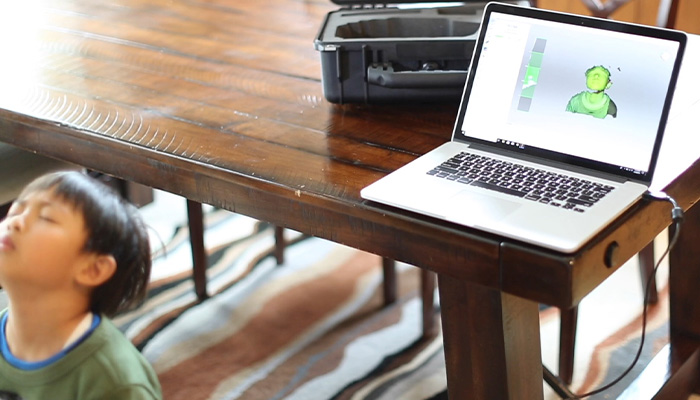Flo Mask Gives Kids The Perfect Fit with 3D Scanning

In order to make personalized products, scanning is probably one of the most efficient and reliable methods. Especially since today 3D scanners are more precise than ever. Whether it is to create adapted anatomical models, glasses, or personalized shoes, 3D technologies have proven time and time again the extent of their possibilities. Kevin Ngo, a father living in Silicon Valley, has, thanks to Artec’s digitalization solutions, developed the Flo Mask project. An application aimed at protecting children from 4 to 12 years old from viruses and air pollution.
It was in 2018, following a summer marked by the most deadly and destructive forest fires on record in California, that Kevin Ngo launched his project. After testing dozens of solutions, ultimately deemed too slow or insufficiently precise, the father turned to digitalization. To do this, he called on the services of the Luxembourg company Artec, which has specialized in the development of 3D scanners and 3D software for several years now. To combine precision, speed and resolution, Kevin and the company opted for the Artec Eva portable 3D scanner, based on the white structured light process, which presents no danger to humans.

Child getting a face scan. (Photo Credit: Artec)
The Development of the Flo Mask
In order to collect a 3D dataset reflecting the diversity of noses, Kevin Ngo toured the San Francisco Bay Area to scan the faces of children of different ethnicities – Asians, Hispanics, African Americans and Caucasians. Thanks to the features and properties of the Eva 3D scanner, it only took 20 seconds to perform each facial scan, followed by a 30-second post-scan cleaning. Once the scans were completed, they embarked on the production of prototypes.
Kevin Ngo details the process: “We aligned each scan by the tip of the lip, and from there, found the optimal one-size-fits-all shape. The scans helped us design a shape that was 90% right for us. We then did half a dozen cycles of 3D printing and test try-ons on the kids, making small adjustments each time and getting prototypes at increasingly higher resolution.” He specifies that he has opted for the material jet process in order to faithfully reproduce the texture of a potential silicone and therefore to validate the final shape before moving on to production.
Ultimately, the mask has a flexible seal surrounding the child’s face while preventing the mask from touching their lips. It also has adjustable straps to keep the ears clear. Officially launched in December 2020, the Flo Mask is now worn by more than 2,000 children across the United States. Moreover, the press release specifies that the filters of the Flo Mask block more than 99.8% of viruses, exceeding the breathability standards of the Food and Drug Administration by 600%. A successful bet for Kevin Ngo, who, thanks to digitization and Artec’s solutions, has managed to develop an application capable of protecting children, while being comfortable.
What do you think of this protective gear? Let us know in a comment below or on our Linkedin, Facebook, and Twitter pages! Don’t forget to sign up for our free weekly Newsletter here, the latest 3D printing news straight to your inbox! You can also find all our videos on our YouTube channel.
Cover Photo Credit: Flo Mask






